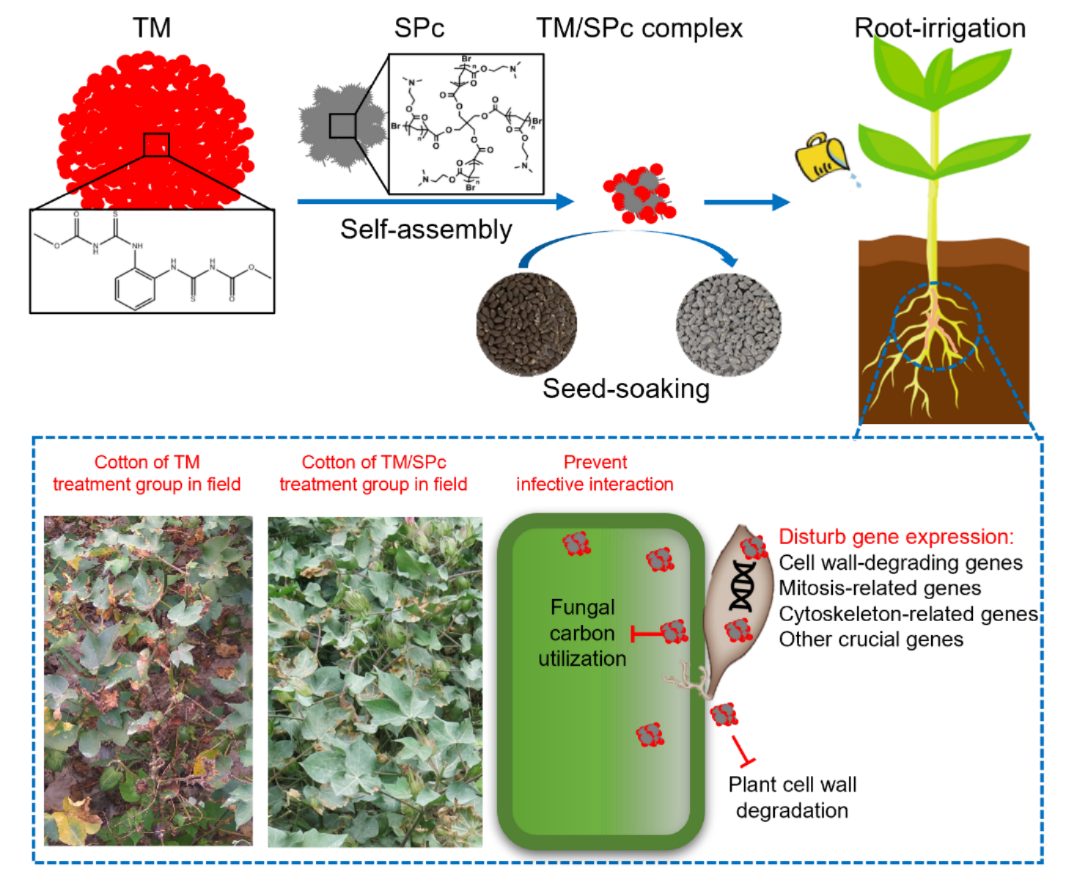Recently,Team of Intelligent Design and Biosynthesis of Agro-microbes of Biotechnology Research Institute (BRI) of Chinese Academy of Agricultural Sciences (CAAS), in cooperation with JieShen Laboratory of College of Plant Protection of China Agricultural University, developed a new nanofungicide for the control of cotton Verticillium wilt, and elaborated its synergistic mechanism. The research results were published in the “International Journal of Biological Macromolecules”.
Cotton (Gossypium hirsutum) production plays an important role in the national economy, and cotton Verticillium wilt is the main disease limiting cotton production, which generally leads to 10% to 30% reduction in yield. Severe disease plots can reduce production by over 80%, or even have no harvest, known as "cotton cancer". Thiophanate-methyl (TM) is a broad-spectrum and low toxicity fungicide, but its control effect on cotton Verticillium wilt is severely limited due to frequent application, short residual efficacy, and easy degradation of active ingredients.
This study developed a thiophanate-methyl (TM) nanoagent through star polycation (SPc)-based nanodelivery system, decreasing the particle size of TM from 834 to 86 nm. The results of laboratory bioassay and field experiments showed that the nanoagent can significantly improve the toxicity and validity period of TM, effectively inhibit the growth of Verticillium dahliae, reduce the disease index of cotton, and increase cotton yield. A new strategy has been provided for the development of fungicides for stubborn soil-borne diseases, which is conducive to promoting pesticide reduction and sustainable agricultural development in China.

Figure legend: Schematic diagram of self-assembled nanofungicide assisting in the prevention and control of cotton Verticillium wilt
Professor XiaofengSu(BRI, CAAS), and associate professorShuoYan (China Agricultural University), are the co-firstauthors of this research. Professor HongmeiCheng(BRI, CAAS), ProfessorJieShen and Shuo Yan (China Agricultural University) are the corresponding authors. The project partners also include the Western Research Institute (CAAS), Xinjiang Academy of Agricultural Sciences, Hebei Academy of Agriculture and Forestry Sciences, Beijing University of Chemical Technology. This research was supported by the National Key R&D Program of China, National Natural Science Foundation of China, Central Public-interest Scientific Institution Basal Research Fund, and Agricultural Science and Technology Innovation Program of CAAS.
The link to the paper is as follows: https://doi.org/10.1016/j.ijbiomac.2023.124354 |